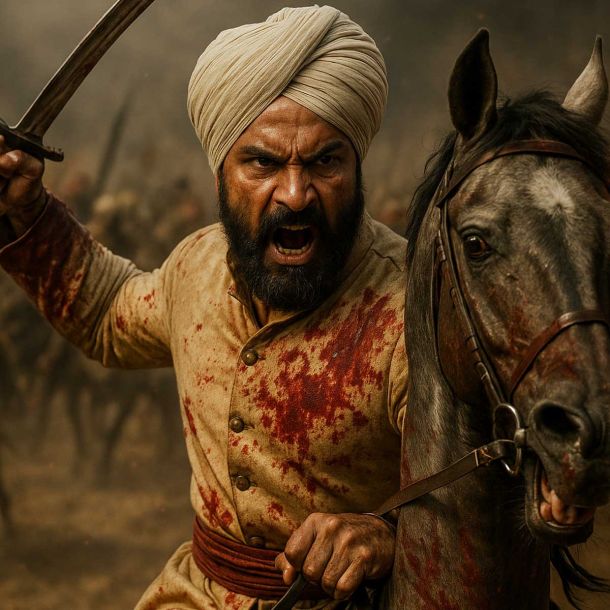Sanatan Articles
Satyaagrah
Written on
Satyaagrah
Written on
Satyaagrah
Written on
Satyaagrah
Written on
Satyaagrah
Written on
JOIN SATYAAGRAH SOCIAL MEDIA
The Eki Movement of hero Motilal Tejawat whose last wish is still waiting to be fulfilled - 100 years of Palchitaria massacre in Gujarat and its cover-up by the British govt
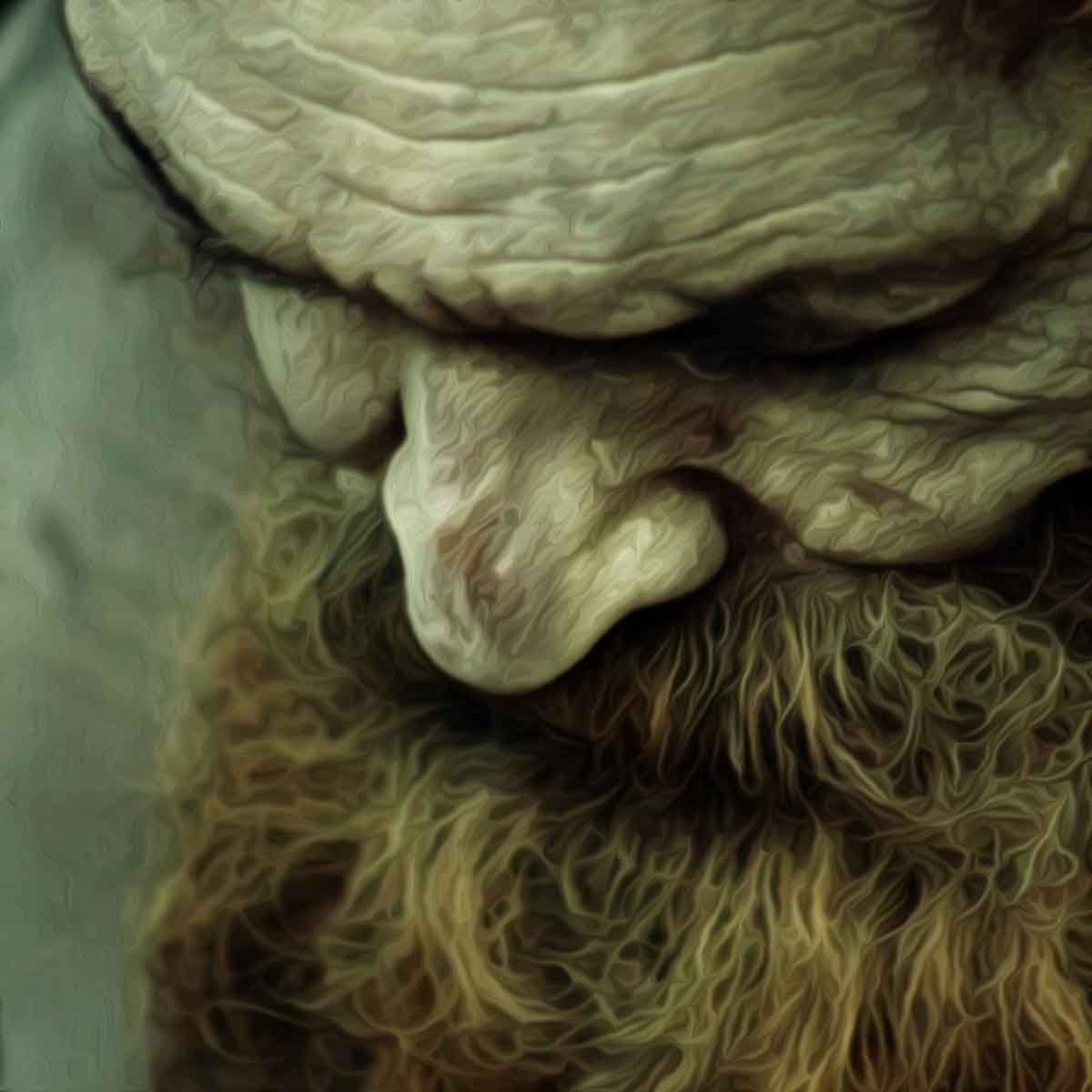
The 1919 Jallianwala Bagh massacre is seared in India's memory. But were there other similar events we are yet to hear of? Evidence suggests that barely three years after the Amritsar killings, a similar carnage took place in a remote Bhil village in north Gujarat. The British, however, appear to have successfully suppressed the incident and it does not find mention in official or mainstream historical records.
On 73rd Republic Day parade at Rajpath in New Delhi, Gujarat’s tableau displayed the freedom movement of the tribals in 1922, marking 100 years of the horrific Palchitaria massacre. On March 7, 1922, Motilal Tejawat, a tribal leader who was often known as ‘Gandhi’ among his Tribal followers, was addressing a crowd of over 10,000 Bhil tribals from Dadhvav villages (Sabarkantha District, Gujarat) as a part of the Eki Movement.
The front of Gujarat’s tableau represented the freedom-fighting spirit of the ancestors of tribals. The rear portion of the tableau represented the massacre by British soldiers on March 7, 1922. The tribal artists dressed in their traditional costumes performed ‘Ger’ dance along with the folklore based on the incident.
|
The village of Palchitaria was renamed Dadhvav and now lies in Vijaynagar taluka, Sabarkantha district in present-day Gujarat. British officer Major H.G. Saturn from Mewad Bhil Corps ordered to open fire at the innocent tribals. 1,200 were shot dead, and two wells were filled with the martyred tribals.
The incident took place just three years after the Jallianwala Bagh incident, but it never found its rightful place in history. When Prime Minister Narendra Modi was Chief Minister of Gujarat, he brought the incident back in front of the world and built a memorial to Motilal Tejawat at the site of the massacre in Sabarkantha.
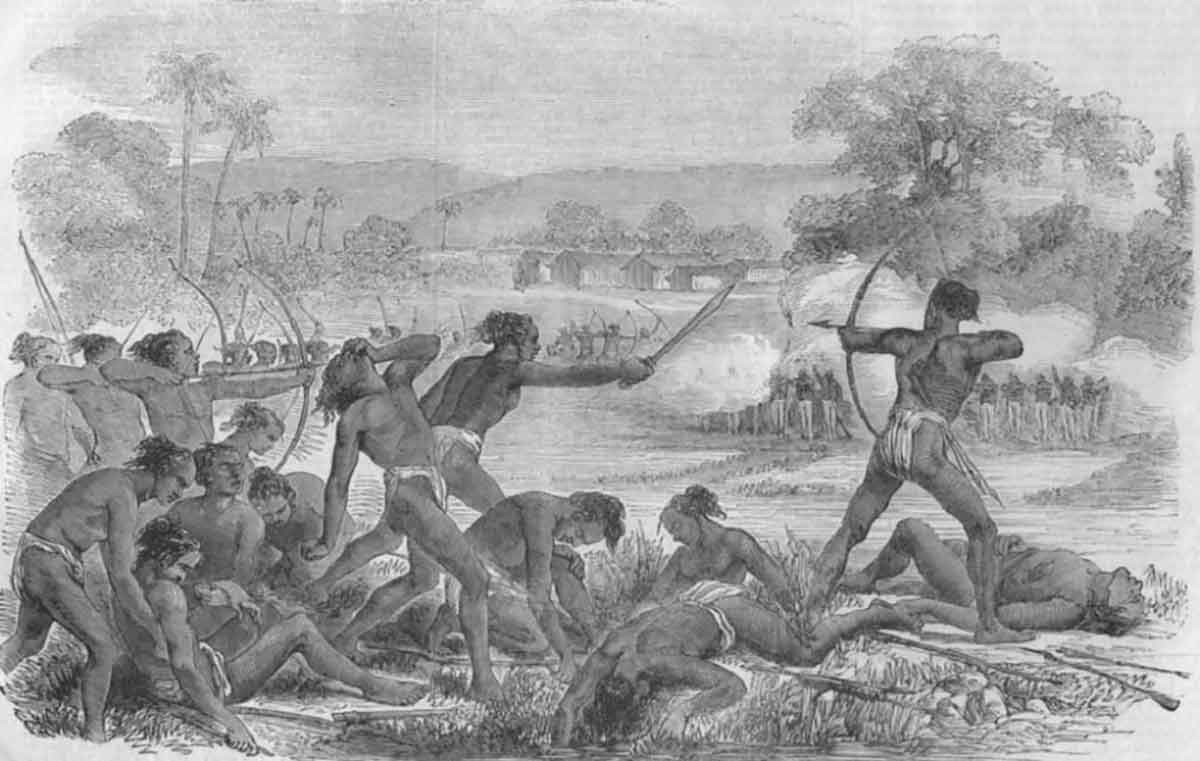 600 Santhals attack a party of 50 sepoys during the 1855 Santhal Rebellion. Photo: Wikimedia Commons |
The coverup of the massacre that claimed lives of three times more than Jallianwala Bagh
There was no official record of the massacre maintained by the British. Unlike Jallianwala Bagh, which happened three years before the Palchitaria massacre, this incident was washed and forgotten in the leaflets of history. A 1997 India Today report suggested when they tried to find records of the incident in the official diary maintained by Sutton, there was no mention of the massacre at Palchitaria. Though, the diary had references to the much smaller incidents involving Bhils in the same area around that period.
According to then-98-year-old Balwant Singh Mehta, Tejawat’s colleague and a freedom fighter, there were two reasons the incident never made to the history books. First, those who died were poor and illiterate tribals. Secondly, the British government had already faced a lot of flack after the Jallianwala episode, and they took all possible steps to suppress the incident.
Notably, Rajasthan State Archives does not have any records of the massacre either. LP Mathur, an expert on reforms and movements among the Bhils, told India Today the official records of the period on Tejawat and his movement mentioned that Bhil followers had marched towards from Walren village near Khedbrahma on February 18, 1922, i.e. 17 days before the incident. Notably, Mathur claimed to have come across several such incidents that British rulers covered up.
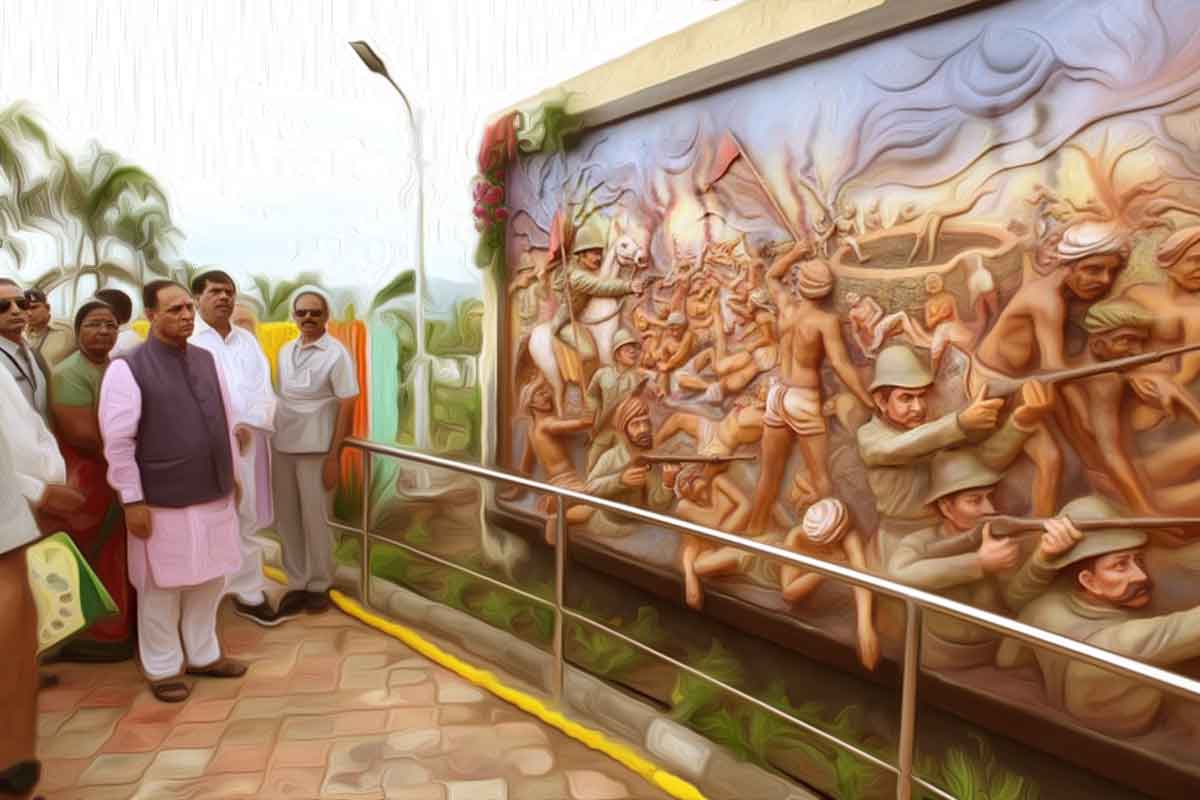 Guj CM paid tribute to tribal leader Motilal Tejawat & other martyrs of independence at the memorial erected at Shaid Van at Pal Dadhvav |
What happened on the day of the massacre?
Thousands of tribals had gathered to hear Tejawat. There were 21 demands on his agenda that he had raised on behalf of the tribals, including lowering the revenue or lagaan levied on tribal farmers. 67-year-old Kala Ramji Gameti narrated the story of the massacre. His grandparents had gone to attend the meeting. His grandmother Somiben was one of those who died in the massacre, and his grandfather Dhulabhai escaped unhurt. The meeting was held on the banks of Heir River on a three-acre land.
The MBC soldiers were present at the meeting. Somiben was standing next to a British officer, possibly Sutton, when a tribal fired a shot in the air. Allegedly, the bullet grazed Sutton Gameti said Somiben begged him not to open fire on innocents just because one of them fired a shot.
Meanwhile, Tribals started raising slogans in their native language that further irked Sutton, who then ordered to open fire at the tribals. Somiben was shot dead among hundreds of others. Another attendee who was present at the meeting, Koyaji Dhulaji Patel said while narrating the incident, “As the firing began and people started running helter-skelter, I hid behind a farm fence. What I then saw was simply unbelievable. People were literally falling like ninepins to the bullets. The sepoys were even killing people for their silver ornaments. I distinctly remember one person, Nathaji Mothaliya of a nearby village, Anodra, whom a sepoy shot dead before removing silver kadas (bangles) from his hands.” Koyaji was hit with the back of the butt of a gun by a sepoy who later asked him to escape.
There were corpses everywhere after the firing stopped. Some of the corpses were dragged away by the family members and friends of the deceased, while the remaining were dumped into a well nearby. Tejawat narrowly escaped the massacre. He suffered two bullet wounds on his thighs. His supporters picked him to safety. Till 1929, Tejawat stayed underground allegedly at the request of Mahatma Gandhi. After that, he remained in jail for seven years.
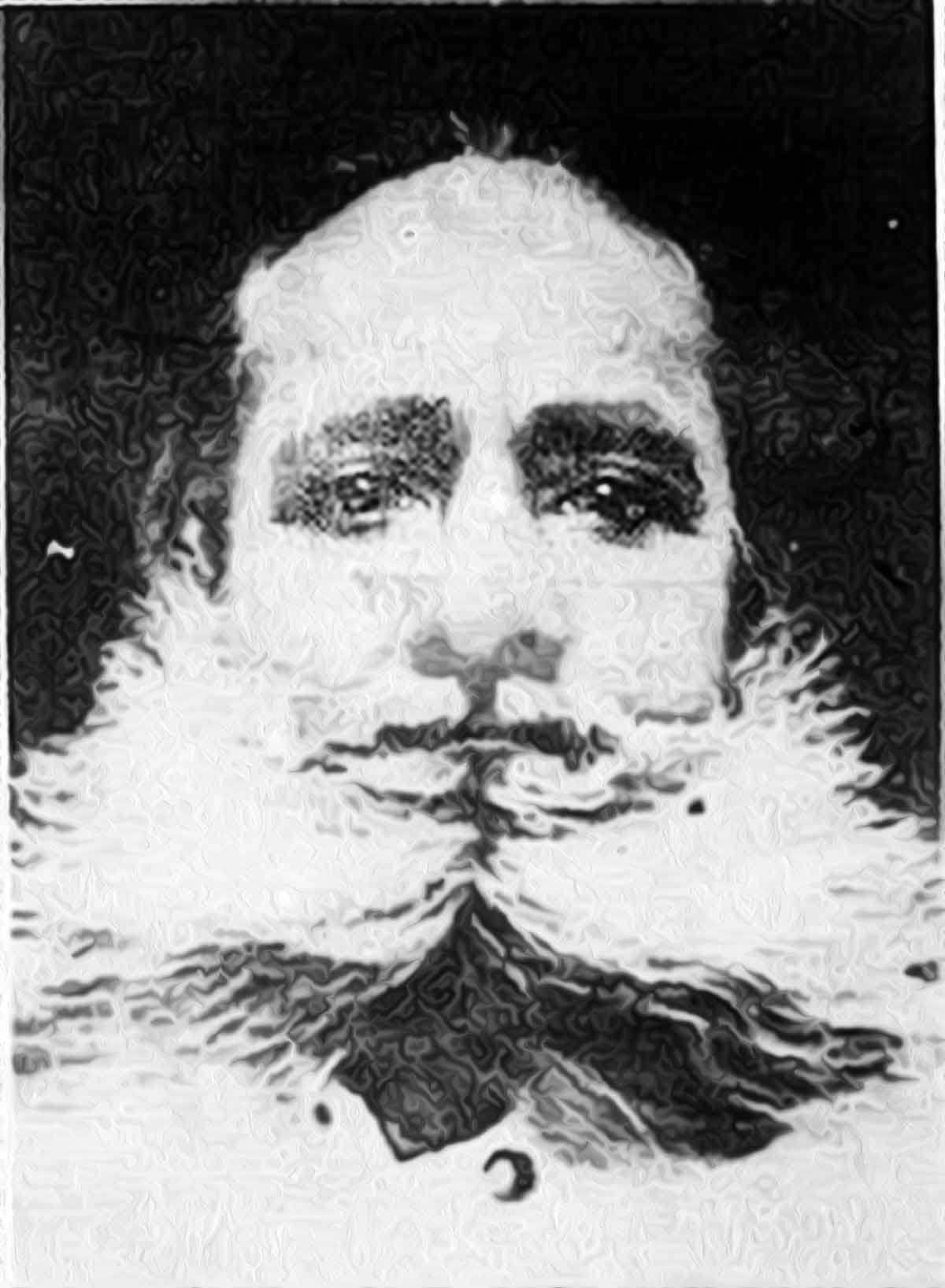 Motilal Tejawat |
The spot of the massacre was named “Virubhumi” by Tejawat after independence when he visited the place to pay respect to the martyrs. The massacre became part of the local folklore but did not get a place in the history books.
|
Motilal Tejawat & The Eki Movement
He was born in Koliyari (now in Jhadol tehsil, Udaipur district, Rajasthan) in 1886. After getting educated up to fifth grade, he started working at the Jhadol tehsil for some time where he witnessed the suppression of the local Bhil people from the hands of the Thakur and the British. This prompted him to resign from his post and he started working for a shopkeeper in Udaipur City. After being newly employed, he was sent to Jhadol for a business where the Thakur ordered him to hand over the building material belonging to Tejawat’s employer which he refused to oblige, for which, he was mercilessly beaten and imprisoned. He was so much pained and humiliated that he decided to leave his job and devote himself to full-time political activity.
The Bijolia movement had a huge impact on Tejawat and he was greatly moved by it. He somehow came in contact with the pamphlets of that movement and distributed them to people in Bhil majority areas. He organized several meetings in Bhil villages and was successful in organizing committees that were keen on articulating the grievances and demands of the Bhil people. The slowly increasing mass movement in Bhil villages gave Tejawat confidence and he started associating his movement being part of the large Independence movement of the country led by, amongst many others, Gandhi Ji. He was a big supporter of an upcoming “Gandhi Raj”.
His efforts had slowly begun to show some good signs and he was able to put together a large gathering of Adiwasi peasants for the annual peasants fair Matri Mundiya near Chittor to spread his message and mobilize his people on the issues of Begar and unfair taxation. After the fair, a large number of people started marching towards Udaipur to meet the Maharana who had agreed to meet them and listen to their problems and demands. But there were many important issues on which the Maharana didn’t give any concession like the use of forests by the Adivasis, Begar, and the grouping of the Adiwasi people for the Shikar. Many reformist newspapers supported the Eki movement and several articles were published in the newspapers like ‘Navin Rajasthan’. Some newspapers published articles about the conditions of the Adivasis and the farmers associated with the movement.
Clearly, a mass movement like this was alarming for the British army because they were familiar with the happenings of the Jallianwala Bagh incident. Complete suppression of such movements was their sole motto.
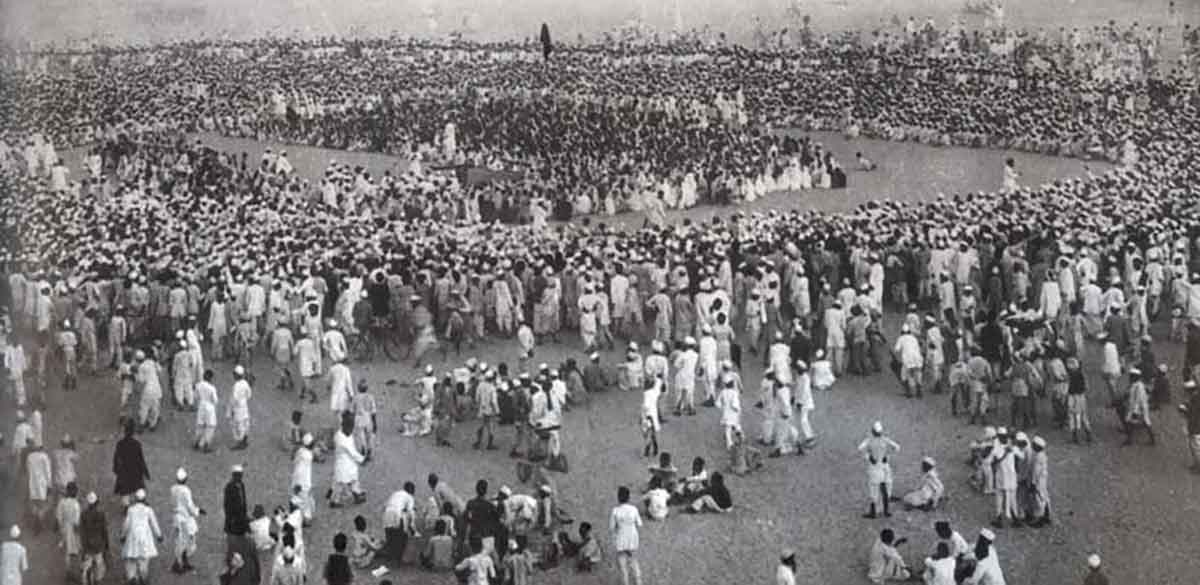 Source: https://images.app.goo.gl/1FNMQCDAVPRJBv6KA |
At noon on March 7, 1922, Mewar Bhil Corps (MBC), a paramilitary force commanded by a British officer, Major H.G. Sutton, open fire on a large gathering of Adivasis led by Motilal Tejawat. The constant firing resulted in the deaths of around 1200 people and many more were seriously injured. While Major Sutton described the massacre as a ‘skirmish’ in which only 22 people were killed. Tejawat somehow managed to escape and the movement continued for another couple of months. The merciless killing of so many people had no effect on the British and on 8th May 1922, the villages of Bhula and Balohiya were besieged by the British soldiers who fired shots on the residents and set the houses to fire killing around 1800 people and 640 houses were burnt to ashes. By the end of 1922, the Eki movement had collapsed.
Having faced the aftermaths of the public massacres before, the British used all their might to curb the spread of the news of another, but a more brutal massacre, amongst different parts of the country. No one came to know about the incident and the British took such extraordinary measures to suppress the incident that even the Rajasthan State Archives Department has no reference of the massacre whatsoever. L.P. Mathur, a retired associate professor of history from Udaipur University said “It appears that the Palchitaria massacre was completely suppressed. The official records of the period on Tejawat and his movement clearly state that he and his Bhil followers had moved in the direction of Palchitaria from Walren village near Khedbrahma (65 km west of Palchitaria) on February 18, 1922, 17 days before the incident. In the archives, there is a telegram to this effect from the political agent at Khedbrahma to his counterpart in Kherwada.” He added that as a research student he had come around many such incidents of atrocities that the British rulers had blacked out. Koyaji Dhulaji Patel’s description of the massacre says that what he saw was unbelievable. People were falling off like ninepins to the Bullets. The British soldiers were killing people even for their silver ornaments. He said that he remembered one man vividly, Nathaji Mothaliya, of a nearby village whom the British shot before removing the silver bangles of his wrist. The corpses that were lying all over the place were thrown in a well nearby which was filled up to its rim. Somehow it was of no one’s interest that the ruthless killings that took place in Palchitaria should come out. Neither the landlords nor the nationalist movements.
 'Eki Movement' - the heroic struggle of the #Bhil and #Garasia people led by Motilal Tejawat (1886-1963), against the social and economic exploitation of the #adivasi by the #British |
Tejawat somehow managed to escape but received bullet shots on his thighs and was seriously injured. He was rescued by some of his supporters and was taken into the hills where he stayed for many years till he surrendered at the request of Mahatma Gandhi in 1929 and remained imprisoned thereafter. He died in Udaipur in 1963.
After the Independence, he visited Palchitaria, the site of the incident to pay his respects to the martyrs of 1922. He addressed a gathering of people and the relatives of those killed two decades earlier, he named the spot of the massacre as ‘Virbhumi’ and requested everyone to hold a fair in their memory on March 7thevery year.
A wish yet to be fulfilled
References:
opindia.com - Anurag
 Support Us
Support Us
Satyagraha was born from the heart of our land, with an undying aim to unveil the true essence of Bharat. It seeks to illuminate the hidden tales of our valiant freedom fighters and the rich chronicles that haven't yet sung their complete melody in the mainstream.
While platforms like NDTV and 'The Wire' effortlessly garner funds under the banner of safeguarding democracy, we at Satyagraha walk a different path. Our strength and resonance come from you. In this journey to weave a stronger Bharat, every little contribution amplifies our voice. Let's come together, contribute as you can, and champion the true spirit of our nation.
 |  |  |
| ICICI Bank of Satyaagrah | Razorpay Bank of Satyaagrah | PayPal Bank of Satyaagrah - For International Payments |
If all above doesn't work, then try the LINK below:
Please share the article on other platforms
DISCLAIMER: The author is solely responsible for the views expressed in this article. The author carries the responsibility for citing and/or licensing of images utilized within the text. The website also frequently uses non-commercial images for representational purposes only in line with the article. We are not responsible for the authenticity of such images. If some images have a copyright issue, we request the person/entity to contact us at satyaagrahindia@gmail.com and we will take the necessary actions to resolve the issue.
Related Articles
- Bhagat Irwin Gandhi - Martyrdom of Shaheed Bhagat Singh (Some Hidden Facts)
- A revolutionist freedom fighter who the British Raj framed for murder
- How Britishers were challenged by 83 year old Ropuiliani in Mizoram in 1892-’93
- A Great man Beyond Criticism - Martyrdom of Shaheed Bhagat Singh (Some Hidden Facts)
- Santi Ghosh and Suniti Choudhury: Two Teenage Freedom Fighters Assassinated British Magistrate
- Saraswathi Rajamani, at 16, became the youngest and first female spy for INA, boldly recruited by Netaji in 1942, courageously spent two years spying on the British in Myanmar during WWII, a pivotal yet overlooked heroine in India's struggle for freedom
- Kartar Singh Sarabha - The Freedom fighter who was Hanged at the age of 19 and inspired Bhagat Singh
- Our first true war of independence lie forgotten within the fog of time and tomes of propaganda: Sanyasi Rebellion, when "renouncers of the material world" lead peasants in revolt against British and fundamentalist islamic clans
- Tirot Singh: An Unsung Hero of the Khasi Tribe who destroyed British with his skill at Guerrilla Warfare
- Fearless female sniper Uda Devi, who etched history during the Siege of Lucknow!
- Winston Churchill's hate for Indians caused millions of deaths: A villainous supremacist
- Freedom struggle of Gurjars against Britishers at Koonja in 1824: 100s of Gurjars Martyred and 100s Hung in Single Tree
- Taimur was attacked and defeated by 20 year old Rampyari Gurjar and her army of 40,000 women
- The Trap in Lahore - Martyrdom of Shaheed Bhagat Singh (Some Hidden Facts)
- Martyrs’ march into the history - Rajguru: The Invincible Revolutionary

